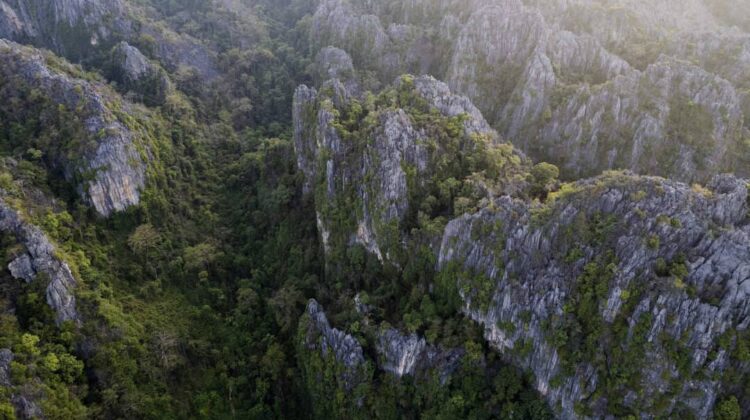
Karst Topographies: The Geomorphology of Erosion
Karst topographies stand as some of Earth’s most breathtaking and peculiar geomorphological entities, distinguished by their remarkable landscapes and the erosive processes that mould them. These terrains are sculpted through the erosion of soluble substrata, including limestone, dolomite, and gypsum, yielding an assortment of phenomena like dolines, subterranean caverns, and hidden watercourses. This treatise ventures into the complexity of karst topographies, elucidating their genesis, global presence, ecological value, and the dilemmas they present for human occupancy and preservation endeavours.
Genesis and Evolution
The origin of karst topographies is traced to meteoric water, which turns mildly acidic upon imbibing carbon dioxide from the ether and the lithosphere. This acidulated aqua then infiltrates fissures in the bedrock, gradually eroding soluble substrata. Spanning epochs to eons, this mechanism expands the fissures into caverns, dolines, and other karstic phenomena. The evolution of karst topographies is swayed by variables such as the nature of soluble substratum, climatic conditions, flora, and the volume of water coursing through the ecosystem.
Varieties of Karstic Phenomena
Karst topographies are celebrated for their plethora of phenomena, each distinguished by its own genesis and physiognomy. Dolines, also termed sinkholes, represent the most conspicuous karstic phenomenon, birthed by the subsidence of subterranean cavities. Caverns and grottoes are natural voids within the rock, often adorned with stalactites and stalagmites precipitated from mineral-laden droplets. Karst fountains arise where subterranean aqua emerges from the rock, and karstic rivers may vanish and resurface along their trajectory. Limestone pavements, with their distinctive clint-and-gryke topography, emerge from the erosion of the rock face.
Dispersion and Ecological Value
Karst topographies pervade the planet, from the lofty limestone karsts of Southeast Asia to the expansive cave networks of Central Europe and North America. These landscapes are not merely of geomorphological interest but are also bastions of biological diversity, harbouring unique habitats. Karst regions frequently shelter endemic species that have evolved to thrive in the dark, secluded environs of caverns. Moreover, karstic aquifers are a crucial source of potable water for legions worldwide, though they are acutely susceptible to contamination given the swift passage of water through the ecosystem.
Dilemmas and Preservation
Karstic landscapes introduce several quandaries. Dolines pose a hazard to edifices and infrastructure, while the expedited drainage in karst regions predisposes them to inundation. The conservation of karstic landscapes emerges as an urgent issue. These terrains are often besieged by deforestation, unregulated tourism, and extraction activities, which can inflict irrevocable damage. Preservation initiatives concentrate on safeguarding significant karstic phenomena, regulating land utilisation to avert contamination of karstic aquifers, and endorsing sustainable tourism practices.
Epilogue
Karst topographies stand as monuments to the gradual yet potent forces of geomorphological processes. Their intricate allure and ecological importance render them invaluable natural assets. However, the vulnerability of these systems accentuates the necessity for judicious management and preservation efforts. By fathoming and honouring the fragile equilibrium of karst topographies, we can ensure their perpetuity as sources of marvel and sustenance for progeny.
Author: Levi Burrell
Science divulgator. He writes for numerous popular science magazines. Collaborates with the Deeping in the area of science dissemination
